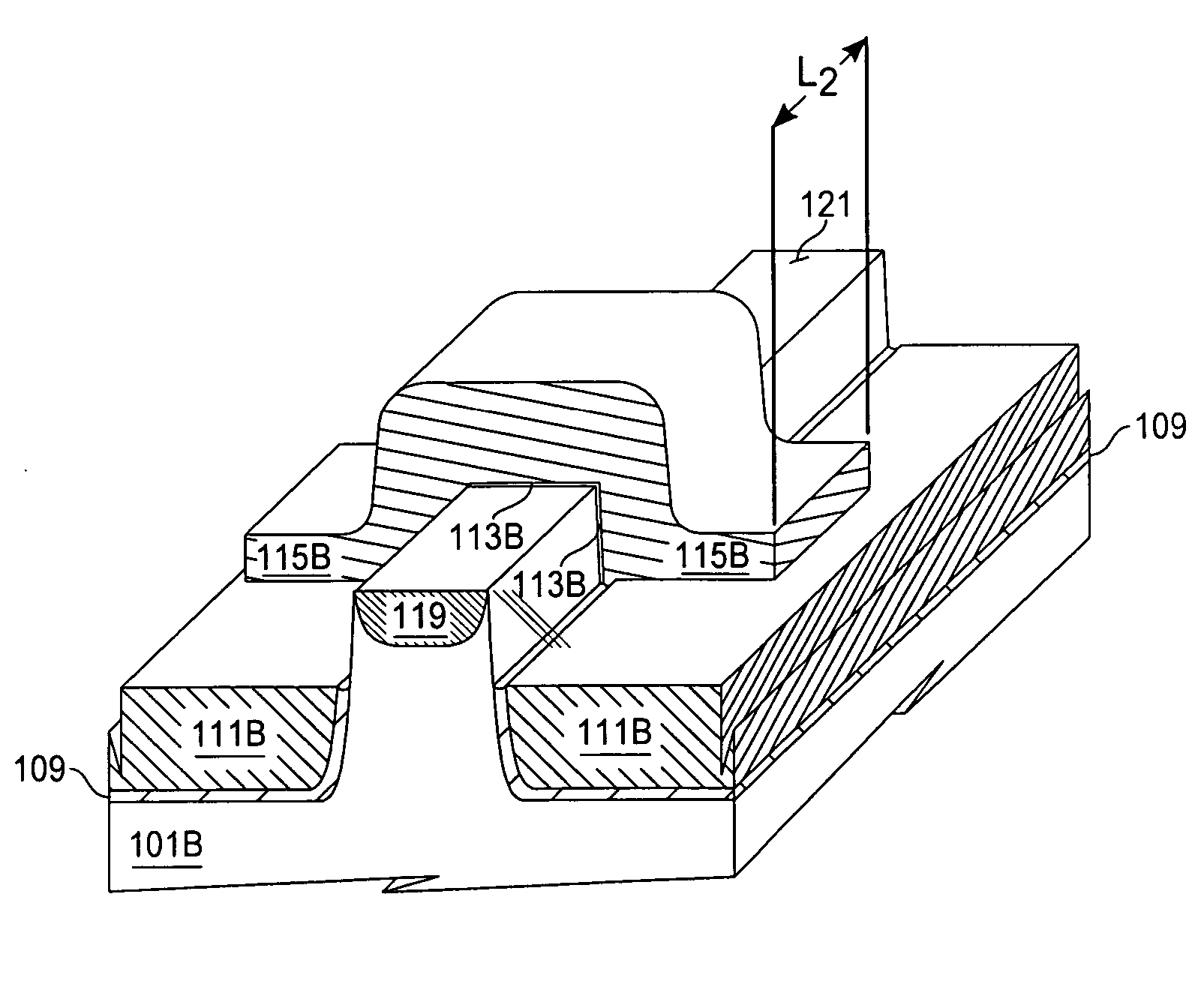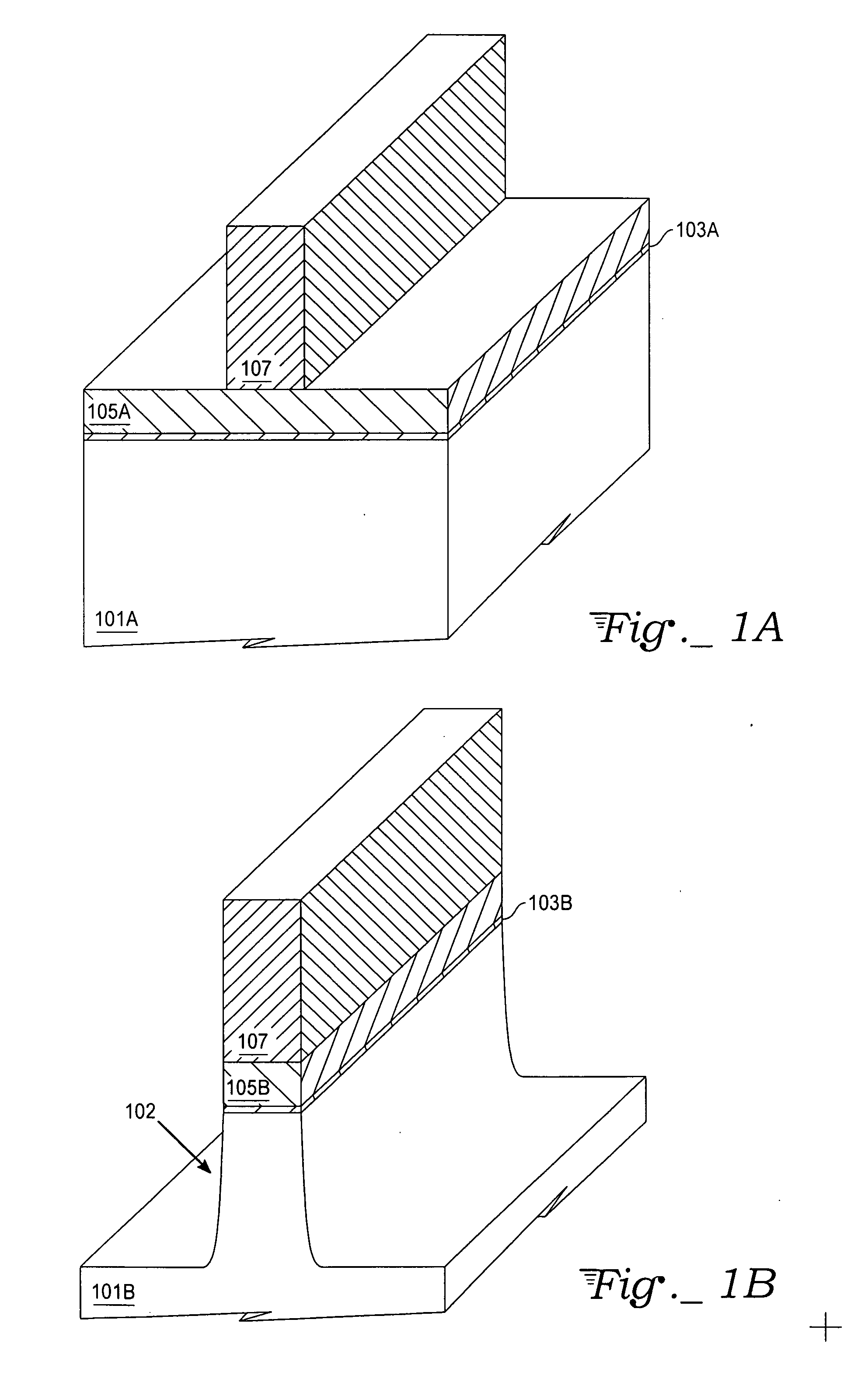FinFET transistor fabricated in bulk semiconducting material
a technology of semiconducting materials and transistors, which is applied in the direction of semiconductor devices, basic electric elements, electrical appliances, etc., can solve the problems of reducing the ability of the gate to control whether, ensuring a fully depleted channel region becomes increasingly difficult, and the conventional mosfet suffers from several problems, so as to facilitate the formation of finfet devices, the effect of high uniformity and reproducibility
- Summary
- Abstract
- Description
- Claims
- Application Information
AI Technical Summary
Benefits of technology
Problems solved by technology
Method used
Image
Examples
Embodiment Construction
[0010] With reference to FIG. 1A, a substrate 101A has a thin silicon dioxide layer 103A, a thicker silicon nitride layer 105A, and a patterned photoresist mask layer 107. In a specific exemplary embodiment, the substrate 101A is be a silicon wafer. However, a skilled artisan will recognize that other semiconductor materials may be used instead of silicon for the substrate 101A. Other semiconductor materials include, for example, elemental semiconductors such as germanium, compound semiconductors such as group III-V, and II-VI materials, and semiconducting alloys. If elemental semiconductors other than silicon, or compound semiconductors are employed, an atomic layer deposition (ALD) process may be employed for producing thin, high quality oxide layers.
[0011] The silicon dioxide layer 103A is a pad oxide to prevent thermally-induced stresses from developing between particular dissimilar materials, such as between silicon and the silicon nitride layer 105A. The silicon dioxide layer...
PUM
 Login to View More
Login to View More Abstract
Description
Claims
Application Information
 Login to View More
Login to View More - R&D
- Intellectual Property
- Life Sciences
- Materials
- Tech Scout
- Unparalleled Data Quality
- Higher Quality Content
- 60% Fewer Hallucinations
Browse by: Latest US Patents, China's latest patents, Technical Efficacy Thesaurus, Application Domain, Technology Topic, Popular Technical Reports.
© 2025 PatSnap. All rights reserved.Legal|Privacy policy|Modern Slavery Act Transparency Statement|Sitemap|About US| Contact US: help@patsnap.com



